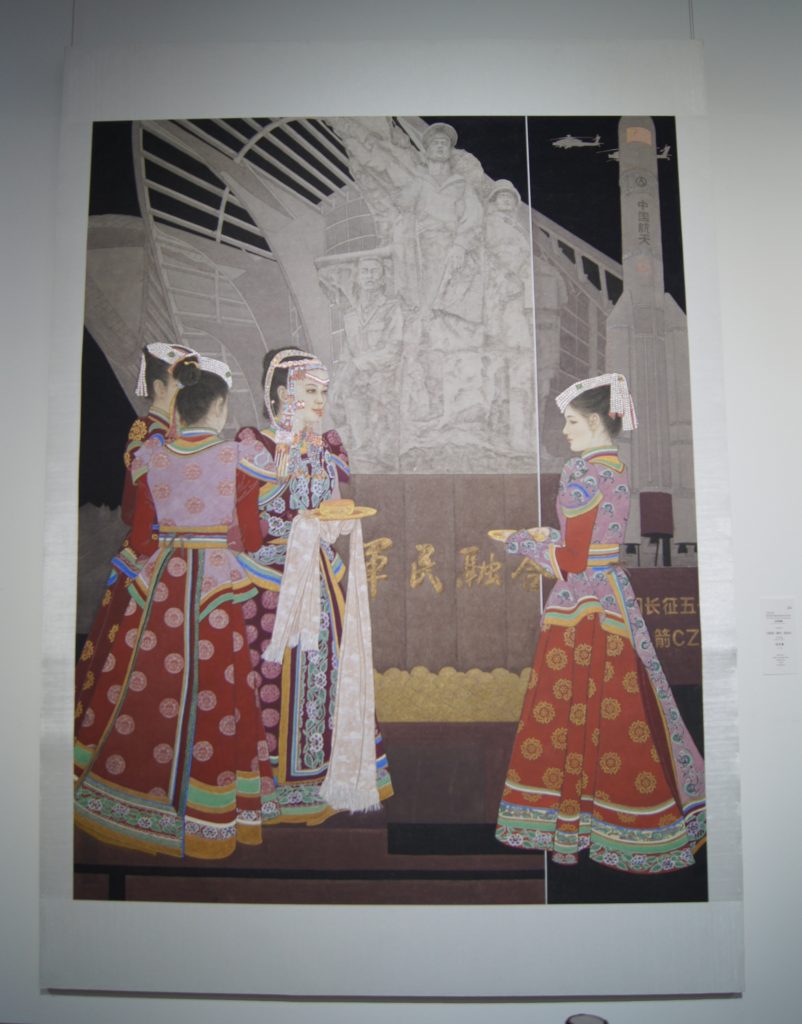Posted March 17, 2021
By SUMMER XIA
QINGDAO, China – “This is the first time Qingdao has the opportunity to hold a national art exhibition since 1978,” Jiandong Liu, curator of Qingdao Powerlong Art Museum, walked along the exhibition hall and said with excitement and pride.
The exhibition hall for the fourth National Art Biennale Shandong Itinerant Exhibition is fairly huge. The traditional Chinese melody inside can easily bring the visitors into this peaceful environment and immerse them into those marvelous paintings.
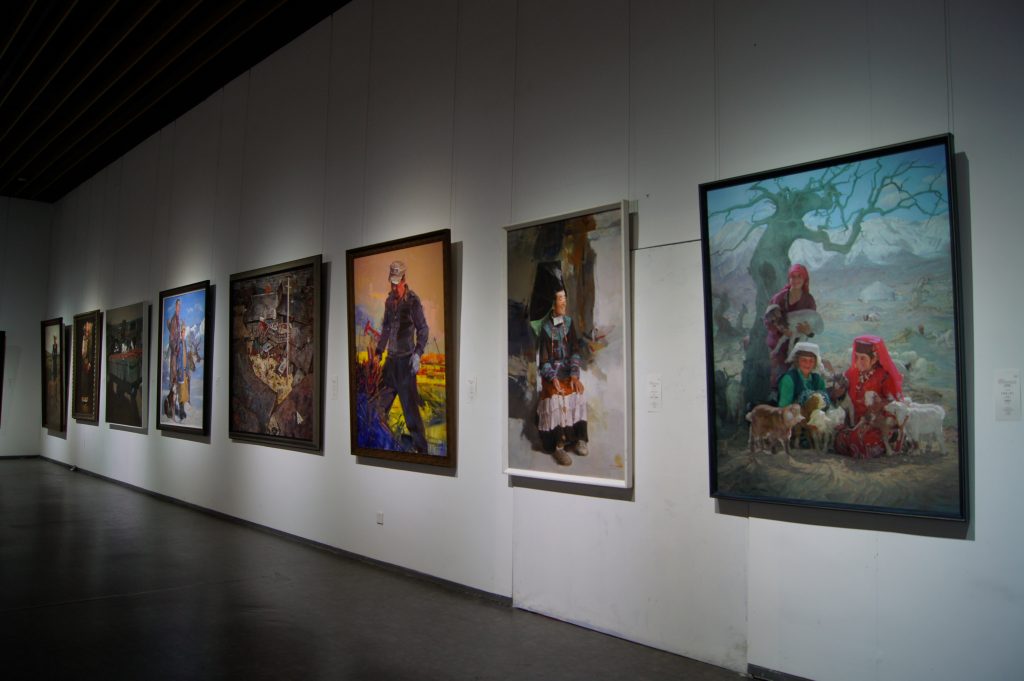
The National Art Biennale is hosted by the Chinese Artists Association and organized by the National Art Committee of the Chinese Artists Association since 2014. Each year, the committee selected about 200 paintings for exhibiting from more than 5,000 artworks collected nationwide and chose 60 paintings from that 200 works to qualify for the Chinese Artists Association’s membership.
The biennale’s uniqueness is the topic: it depicts the colorful life and cultures of 56 ethnic minorities in China. So, in the exhibition, the visitors would see paintings with different contents and styles to present the ethnic minorities’ cultural lives, reflect the diversities of 56 ethnic cultures, and emphasize the nation’s common spiritual pursuit as a whole.

“This is my first time to see an art exhibition like this, and it definitely helps me to know more about different ethnic minorities’ lifestyles in China, which also extends my knowledge scope and make me want to travel to those ethnic minorities lived,” Yaru Chen, one of the visitors, said. “I also feel that paintings tell more vivid stories than photography exhibitions I saw before.”
Although the biennale’s theme does not change each year, there will be seminar holds during each year’s exhibition with different specific focuses on each year’s biennale. Liu said this year’s special topic is to discuss the orientation of the national art’s development in the modern era and how to better connect it with Western arts.
“To connect with Western arts is not only from the painting styles. Although more than half of the paintings in the exhibition are oil painting, these paintings are still different than Western oil paintings, as the artworks present culture-specific implications,” said Liu. “So, what we want to explore in this year’s biennale is to encourage artists to go out of their comfort zones and challenge traditional styles. Also, to find a balance point between Western art and Chinese art to ‘export’ our artworks to the world.”
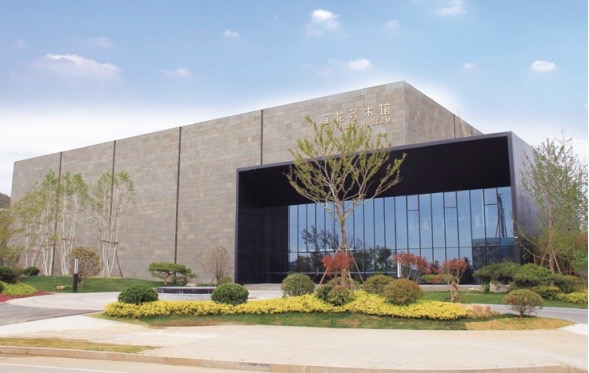
This year’s biennale opened on Nov. 23, 2020, in Lanzhou, China, and the itinerant exhibition began on Dec. 18. Shandong Province is the second stop of the itinerant exhibition and the committee chose Qingdao Powerlong Art Museum as the place to host the exhibition.
The Shandong Itinerant exhibition began on Jan. 12, and lasts until the middle of March.
“To hold the itinerant exhibition is such a valuable opportunity, so Shandong Artists Association worked very hard to be in the itinerant. We want to have this exhibition in Shandong because ethnic art is an essential part of Chinese art, and it became fairly popular. So, we want audiences in the Shandong area also can experience such an important art style,” Di Ren, director of Exhibition Department at Qingdao Powerlong Art Museum, said.
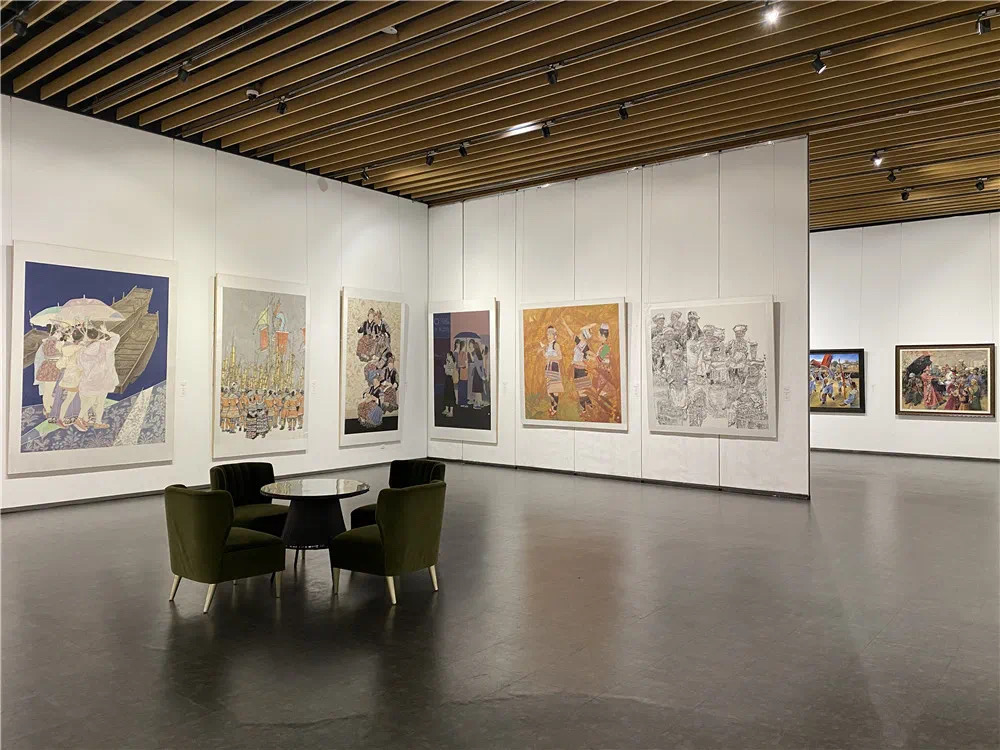
However, Liu showed great confidence in describing how the exhibition came to Qingdao and the Powerlong Art Museum.
” It is the Shandong committee that came to us rather than we went to them to recommend ourselves because we are the largest art museum in Qingdao with an admirable reputation within Shandong area. Also, I believe we will be the museum to host the exhibition if the Chinese Artists Association chose to open the biennale in Shandong,” said Liu.
Although Liu was not surprised by the Shandong committee’s decision to let Powerlong host the exhibition, he still made many scrupulous preparations for it because “it is a big deal for the whole city and province.”
“For the local artists, it is a precious opportunity to get inspired from those high-quality paintings in the exhibition; for the government, it is a chance to publicize the city and promote the economy; and for the citizens, it is a valuable art event to develop their aesthetic tastes,” Liu said.
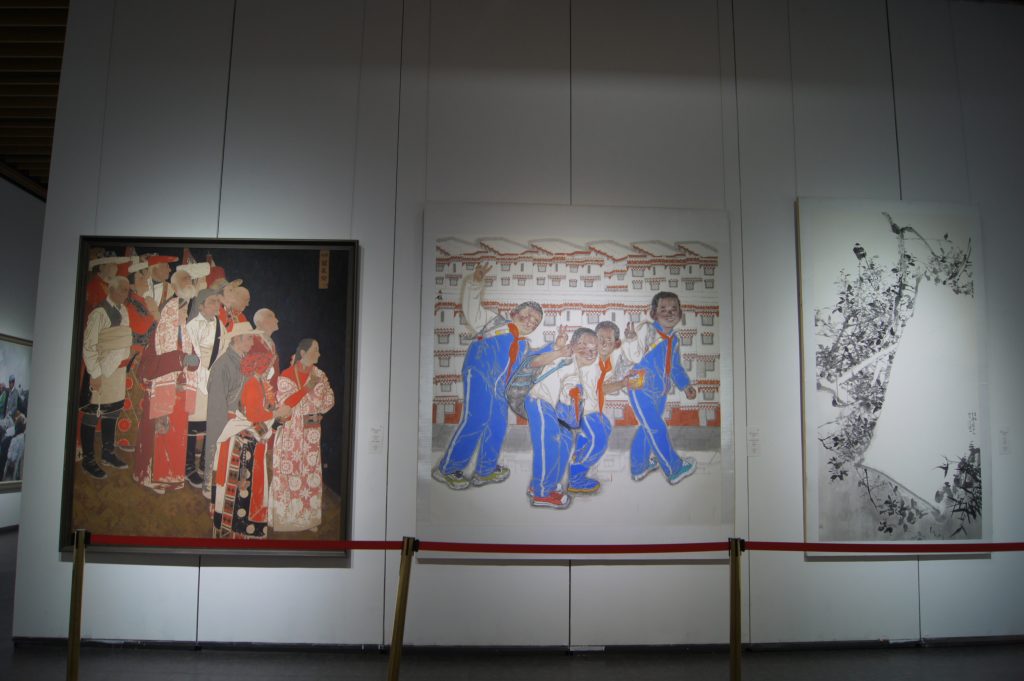
The exhibition’s visitors can be divided into professional or amateur artists and citizens with no art experiences. Most of the visitors showed a great extent of the enthusiasm of seeing the exhibition.
Wenyan Liu is one of the exhibition’s visitors who is a professional artist from Qingdao. Her painting, “Depicting the Beauty, Living by Love and Experiencing One Motherland,” is one of the 60 granted membership paintings in the exhibition.
“I am so excited when I knew the itinerant exhibition came to Qingdao as I could not go to other cities to see my painting in the exhibition because of the pandemic,” Liu said, “not being exaggerated, I did not sleep during the night before I went to the exhibition and I got up at around 6 a.m. in the next day to prepare for the visiting.”
Liu’s painting’s main content is about Mongolian girls using the Hada, the traditional Mongolian scarf for greeting and worship, to pray for the prosperity of China.
The message Liu tried to express is the same love we shared for our nation among different ethnicities. This is also the first time that Liu painted the ethnic theme and participated in the biennale.
“I did not expect my painting to be selected, and it really gave me a huge encouragement to continue painting more ethnic themes. I definitely will go to more places where different ethnic minorities lived to observe their lifestyles and paint more high-quality artworks,” said Liu.
Although this national biennale attracted many artists and citizens to come to the museum, the pandemic still impacts the number of daily visitors. Moreover, Powerlong had strict precautions for visitors, such as measuring body temperatures, writing down personal contact information before entering, wearing masks, and keeping six feet apart.
“There are only about 50 visitors per day on the weekdays and around 100 visitors per day on weekends,” said Ren. “So, we also have online exhibitions on our WeChat official account.”
The difference between Powerlong Art Museum’s online exhibitions with other art museums is that Powerlong is not only using photos with verbal explanations but short videos to tell audiences about each painting’s main idea.
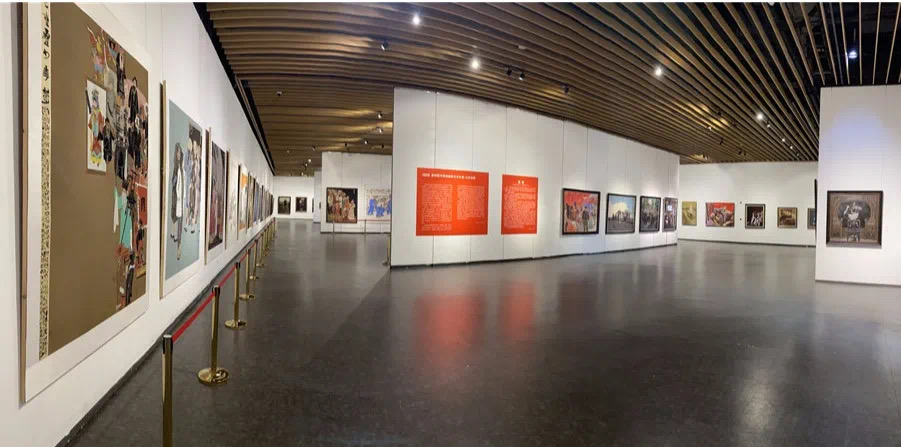
“We started the virtual exhibition around March 2020, when China was in lockdown, and everyone had to work at home. Besides presenting art exhibitions online, we also created videos of teaching basic painting techniques and how to analyze an artwork for rising artistic awareness in public,” Ren said.
The total views of Powerlong’s art videos last year were about 500,000, and each article published on its WeChat official account was about 5,000 views.
“We were very new to the virtual way of presenting artworks to our audiences, but the results are fulfilling. And I think we did a lot more for the public in terms of art than what we did before the pandemic,” said curator Liu.

